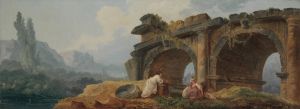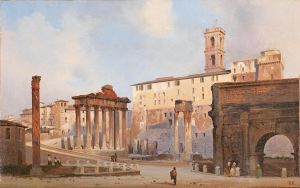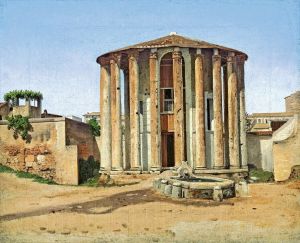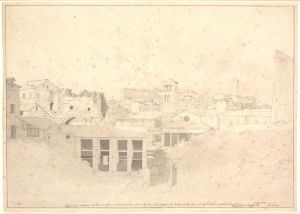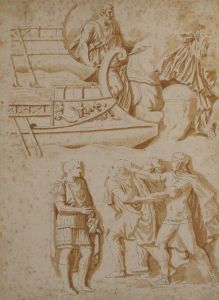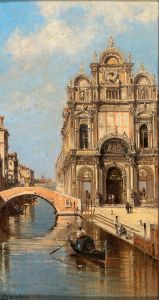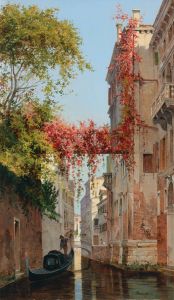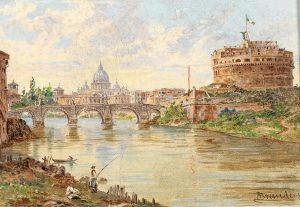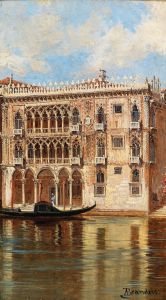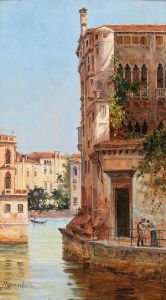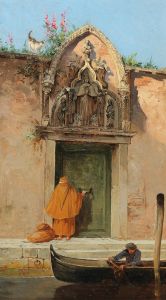
Rome, ‘Il Foro Romano, Roma’
A hand-painted replica of Antonietta Brandeis’s masterpiece Rome, ‘Il Foro Romano, Roma’, meticulously crafted by professional artists to capture the true essence of the original. Each piece is created with museum-quality canvas and rare mineral pigments, carefully painted by experienced artists with delicate brushstrokes and rich, layered colors to perfectly recreate the texture of the original artwork. Unlike machine-printed reproductions, this hand-painted version brings the painting to life, infused with the artist’s emotions and skill in every stroke. Whether for personal collection or home decoration, it instantly elevates the artistic atmosphere of any space.
Antonietta Brandeis (1849–1926) was a Czech-born Italian painter known for her detailed and vibrant landscapes and cityscapes, particularly those depicting scenes from Italy. One of her notable works is "Il Foro Romano, Roma," which translates to "The Roman Forum, Rome." This painting captures the historic and archaeological significance of the Roman Forum, a central area around which ancient Rome developed.
The Roman Forum, or Forum Romanum in Latin, was the heart of ancient Rome, serving as a public area where commerce, business, prostitution, cult, and the administration of justice took place. It was the nucleus of Roman public life for centuries. The Forum is located in a small valley between the Palatine and Capitoline Hills and was originally a marketplace. Over time, it evolved into the social, political, and economic hub of the Roman Empire.
Brandeis's painting of the Roman Forum is a testament to her skill in capturing architectural details and the essence of historical sites. Her work often reflects a meticulous attention to detail and a vibrant use of color, which brings the ancient ruins to life. In "Il Foro Romano, Roma," she likely depicted the ruins with a sense of romanticism and nostalgia, characteristic of many 19th-century artists who were fascinated by the remnants of ancient civilizations.
The painting would include notable structures such as the Arch of Septimius Severus, the Temple of Saturn, the Temple of Vesta, and the Basilica of Maxentius and Constantine. These structures, though in ruins, stand as a testament to the grandeur and architectural prowess of ancient Rome. The Arch of Septimius Severus, for instance, was erected in AD 203 to commemorate the victories of Emperor Septimius Severus and his sons. The Temple of Saturn, one of the oldest sacred places in Rome, was dedicated to the god Saturn and served as the treasury of the Roman Republic.
Brandeis's depiction of the Roman Forum would have been influenced by the 19th-century Romantic movement, which emphasized the beauty and sublimity of ruins and the passage of time. Her work provides a window into the past, allowing viewers to appreciate the historical and cultural significance of the Roman Forum.
Antonietta Brandeis was trained at the Academy of Fine Arts in Venice, and her works often reflect the influence of her academic training and her exposure to the rich artistic heritage of Italy. She spent much of her life in Venice, and her paintings frequently feature Italian cities and landscapes. "Il Foro Romano, Roma" is a part of her broader oeuvre that celebrates the beauty and history of Italy.
In summary, "Il Foro Romano, Roma" by Antonietta Brandeis is a painting that captures the historic Roman Forum with great detail and vibrant colors. It reflects the artist's skill in depicting architectural ruins and her fascination with the historical significance of ancient Rome. The painting serves as a visual document of one of the most important archaeological sites in the world, offering viewers a glimpse into the grandeur of ancient Roman civilization.






